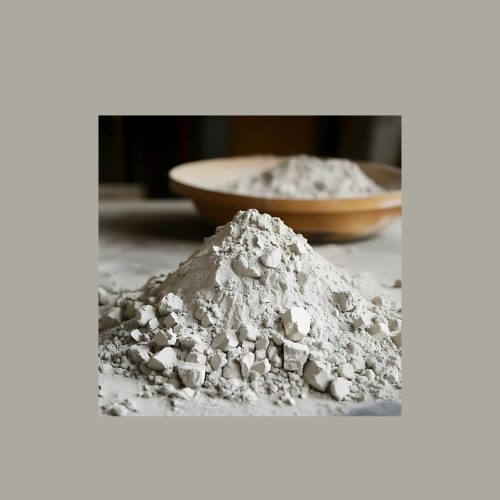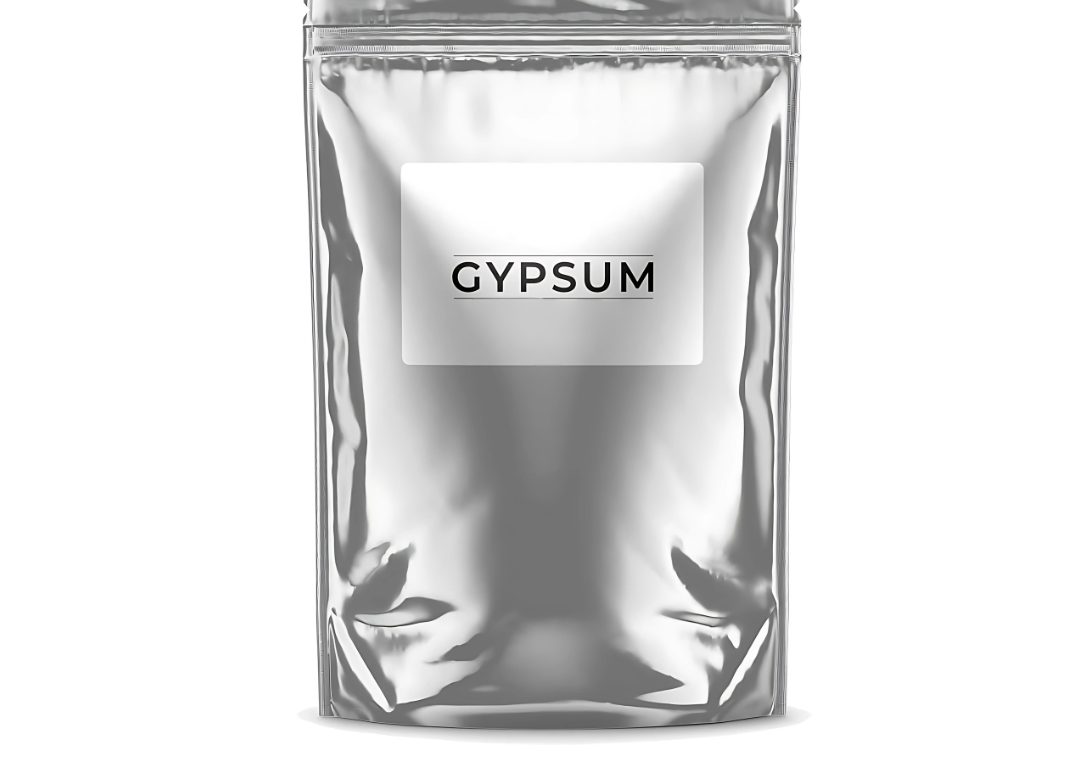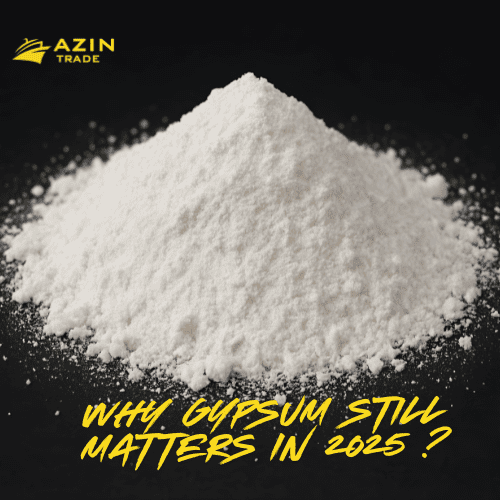Iran Gypsum Powder Industry in 2025: Comprehensive Market Analysis, Production, Quality & Export Trends
Table of Contents
-
Introduction to Gypsum Powder
-
Geological Profile and Reserves of Gypsum in Iran
-
Mining Methods and Production Technologies
-
Quality Control & Standards for Gypsum Powder
-
Market Segmentation and Industry Applications
-
Iran’s Gypsum Powder Production Capacity & Leading Manufacturers
-
Export Markets, Trade Statistics, and Logistics Challenges
-
Economic Impact and Role in Iran’s Mining Sector
-
Environmental Sustainability Practices in Gypsum Production
-
Technological Innovations and Future Industry Trends
-
Challenges & Risks Facing Iran’s Gypsum Powder Industry
-
Detailed Market Forecast and Growth Opportunities
-
Comprehensive Data Tables and Infographic Concepts
-
Conclusion
-
References & Authoritative Resources
1. Introduction to Gypsum Powder
Gypsum powder (CaSO₄·2H₂O), also known as calcium sulfate dihydrate, is an essential mineral widely used in construction, agriculture, and industry. Known for its fire resistance, sound absorption, and easy workability, gypsum powder plays a pivotal role in modern building materials, including plaster, drywall, cement additives, and soil conditioners.
Importance of Gypsum Powder
-
It acts as a fire retardant in construction materials.
-
Regulates moisture in buildings, improving indoor air quality.
-
Improves soil texture and nutrient retention in agriculture.
-
Used in precision casting and molding industries.
In Iran, the gypsum industry holds significant strategic value due to the country’s vast reserves and rapidly growing construction sector.
2. Geological Profile and Reserves of Gypsum in Iran
Iran ranks among the world’s top gypsum reserve holders, boasting an estimated 12 billion tons of high-quality gypsum deposits scattered across multiple provinces.
Key Provinces and Reserves Table
| Province | Estimated Reserves (Million Tons) | Major Mining Areas | Characteristics |
|---|---|---|---|
| Yazd | 4200 | Ardakan, Mehriz | High purity, low impurities |
| Semnan | 2500 | Shahroud, Garmsar | Good crystalline quality |
| Kerman | 2300 | Sirjan, Bam | Easy mining conditions |
| Isfahan | 1800 | Natanz, Kashan | Medium purity |
| Fars | 1200 | Shiraz, Jahrom | Some refractory gypsum |
Geological Formation
Iranian gypsum deposits were mainly formed in sedimentary basins during the Jurassic and Cretaceous periods, with large beds resulting from evaporation of ancient seas.
Geological mapping and reserve estimation is performed by the Geological Survey of Iran (GSI), ensuring continuous updates on mining potentials.
3. Mining Methods and Production Technologies
Mining Methods
-
Open-Pit Mining: The predominant extraction method, involving removal of surface layers to access gypsum beds.
-
Selective Mining: Applied where environmental regulations require minimizing land disturbance.
Production Process Flowchart
-
Extraction: Gypsum rock is mined from open pits.
-
Crushing: Rocks are crushed into smaller pieces by jaw and hammer crushers.
-
Grinding: Pulverized into fine powder via ball mills or roller mills.
-
Calcination: Heating at ~150°C in rotary kilns or flash calciners to remove water molecules, producing plaster of Paris (CaSO₄·½H₂O).
-
Cooling & Screening: Powder is cooled and screened to achieve desired particle size.
-
Packaging: Final product packed in moisture-proof bags for shipment.
Technological Innovations
-
Introduction of high-efficiency flash calciners reducing energy consumption by 20%.
-
Use of automated quality control systems with laser particle size analyzers and moisture sensors.
-
Dust suppression systems to comply with environmental standards.
4. Quality Control & Standards for Gypsum Powder
Iranian gypsum powder manufacturers adhere to multiple international and national standards ensuring product reliability and customer confidence.
| Standard | Description | Applicability |
|---|---|---|
| ISO 9001 | Quality management system | Certification for manufacturing processes |
| ASTM C472 & C59 | Gypsum plaster and drywall standards | Construction materials in the US and globally |
| EN 13279-1 | European gypsum binder requirements | Export to European Union countries |
| ISIRI 10683 | Iranian national gypsum powder standard | Domestic market compliance |
Key Quality Parameters
-
Calcium sulfate purity: ≥ 95%
-
Moisture content: ≤ 1%
-
Setting time: 5–15 minutes (depending on application)
-
Particle size distribution: Critical for application consistency
Laboratories equipped with advanced testing devices perform regular batch quality checks to maintain standards.

5. Market Segmentation and Industry Applications
Gypsum powder is a multi-purpose material serving several vital sectors:
| Sector | Application | Key Benefits |
|---|---|---|
| Construction | Drywall panels, plasters, cement additive | Fire resistance, smooth finish |
| Agriculture | Soil conditioning, pH adjustment | Improves soil structure and fertility |
| Industrial | Mold casting, ceramics | High dimensional accuracy |
| Environmental | Water treatment, flue gas desulfurization | Removes pollutants, acid neutralization |
| Decorative Arts | Sculptures, ornamental moldings | Easy shaping, quick drying |
6. Iran’s Gypsum Powder Production Capacity & Leading Manufacturers
National Production Overview
Iran produces approximately 2.6 million tons of gypsum powder annually, with a majority consumed domestically in construction and industry.
| Manufacturer | Location | Annual Capacity (Thousand Tons) | Website |
|---|---|---|---|
| Iran Gypsum Co. | Yazd | 700 | irangypsumco.ir |
| Kerman Gypsum Industries | Kerman | 450 | kermangypsum.com |
| Semnan Gypsum Industrial Co. | Semnan | 400 | semnangypsum.com |
| Isfahan Gypsum Factory | Isfahan | 350 | isfangypsum.ir |
| Fars Gypsum Producers | Fars | 300 | farsgypsum.ir |
Production Trends
-
Annual capacity is expected to increase by 5% per year due to rising domestic demand.
-
Investments in automation and new production lines are underway to improve efficiency.
7. Export Markets, Trade Statistics, and Logistics Challenges
Export Volume and Destinations
Iran exports approximately 1.6 million tons of gypsum powder annually, with major markets including:
| Country | Export Volume (Thousand Tons) | % Share of Total Exports | Main Use |
|---|---|---|---|
| Iraq | 500 | 31% | Construction, cement production |
| UAE | 300 | 19% | Industrial and construction sectors |
| Afghanistan | 200 | 13% | Infrastructure development |
| Turkey | 150 | 9% | Building materials market |
| Others | 450 | 28% | Various Middle East countries |
Trade Logistics
-
Exports primarily ship via Bandar Abbas and Khorramshahr ports.
-
Road and rail networks link mining regions to ports, though infrastructure requires modernization.
-
International sanctions complicate financial transactions and supply chain management.
8. Economic Impact and Role in Iran’s Mining Sector
Gypsum production contributes significantly to Iran’s mining GDP, employment, and construction materials supply chain.
-
Employs thousands in mining, processing, logistics, and sales.
-
Supports Iran’s burgeoning construction sector, vital for urban development plans.
-
Generates export revenue, helping diversify the country’s mining exports beyond oil and gas.
9. Environmental Sustainability Practices in Gypsum Production
Iranian gypsum companies are increasingly adopting environmental best practices to reduce their ecological footprint:
| Environmental Aspect | Practice | Benefit |
|---|---|---|
| Dust Emission | Installation of dust collectors and water spray systems | Reduced air pollution |
| Land Reclamation | Backfilling and re-vegetation after mining | Restores natural habitats |
| Water Usage | Recycling and closed-loop systems | Conserves scarce water resources |
| Waste Management | Recycling gypsum waste in cement and plaster production | Minimizes landfill usage |
Adoption of ISO 14001 Environmental Management Systems is on the rise, improving compliance with global standards.
10. Technological Innovations and Future Industry Trends
Iran’s gypsum powder industry is embracing:
-
Automated mining and processing lines for improved efficiency.
-
Advanced calcination technologies to reduce energy consumption.
-
AI-based quality control using machine learning algorithms to predict product performance.
-
Development of specialty gypsum products like enhanced fire-resistant plaster and rapid-setting variants.
-
Integration with green building certifications for export competitiveness.
11. Challenges & Risks Facing Iran’s Gypsum Powder Industry
-
Geopolitical Sanctions: Limit access to advanced machinery and international financing.
-
Infrastructure Deficiencies: Aging transport networks slow supply chains.
-
Environmental Regulations: Increasing compliance costs challenge smaller producers.
-
Market Competition: From cheaper imports and synthetic gypsum substitutes.
-
Quality Variation: Need for better standardization to compete internationally.
12. Detailed Market Forecast and Growth Opportunities
| Metric | 2025 Value | 2030 Forecast | CAGR (%) |
|---|---|---|---|
| National Production (tons) | 2,600,000 | 3,400,000 | 5.3% |
| Export Volume (tons) | 1,600,000 | 2,100,000 | 5.2% |
| Domestic Consumption (tons) | 1,000,000 | 1,300,000 | 5.0% |
| Construction Sector Demand (%) | 65% | 70% | Growing |
Growth Drivers:
-
Increased urbanization and infrastructure projects.
-
Expansion of export markets in Middle East and Asia.
-
Government incentives for mining modernization.
13. Comprehensive Data Tables and Infographic Concepts
Proposed Infographics:
-
Iran Gypsum Deposits & Mining Sites Map
-
Production Process Flowchart (Mining to Packaging)
-
Export Market Share Pie Chart
-
Environmental Impact Mitigation Steps
-
Quality Control Testing Workflow
Data Tables:
-
Reserves by Province
-
Production Capacities of Leading Manufacturers
-
Export Volumes & Trade Partners
-
Industry Standards Compliance Matrix
14. Conclusion
Iran’s gypsum powder industry remains a vital segment of the national economy, supported by abundant reserves and a strong domestic market. While challenges exist, ongoing technological advancements, environmental improvements, and expanding export networks promise sustainable growth.
For international partners and construction stakeholders, Iran represents a reliable supplier of high-quality gypsum powder with competitive pricing and strategic geographic advantages.




